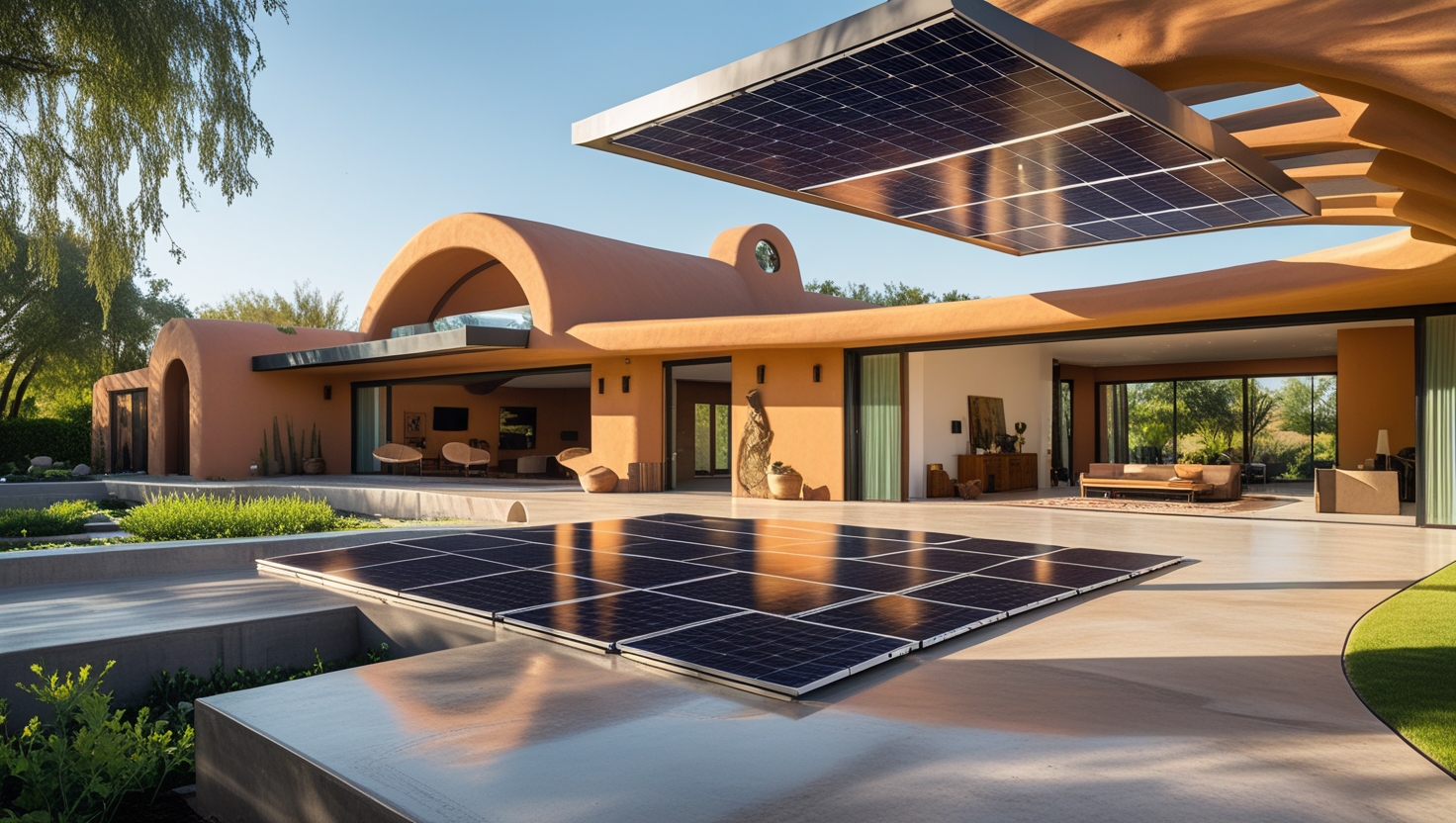Spanish Hacienda Style Homes: 8 Things You Need to Know:-
Welcome to our guide on Spanish Hacienda style homes! If you love architecture that combines history, culture, and timeless elegance, you’re in for a treat. These homes, with their warm and inviting vibe, have won hearts in the USA and even popped up in the UK as luxurious Mediterranean-inspired properties. Whether you’re dreaming of owning one, building one, or just curious about this unique style, this post will walk you through what makes Spanish Hacienda homes so special.
For readers in the USA, especially in states like California, Arizona, and Florida, these homes are a nod to the region’s Spanish heritage. In the UK, they’re rarer but bring a sunny, exotic flair to upscale properties. We’ve gathered insights from trusted sources like The Spruce and Monster House Plans to ensure you get accurate, reliable information. Let’s dive into the 8 things you need to know about Spanish Hacienda style homes! Spanish Hacienda Style Homes
1. Origins and History
Spanish Hacienda homes trace their roots to the 16th century in Spain and Mexico. The term “hacienda” referred to large estates that were self-sufficient, including a main house, outbuildings, and surrounding land. These estates blended Spanish, Moorish, and local Mexican influences, creating a unique architectural style.
In the USA, the style gained popularity in the early 20th century, especially in California during the 1920s and 1930s, as architects drew inspiration from Spanish colonial missions. Today, the style remains a favorite for its historical charm and practical design, as noted by The Real Estate Guy LV.
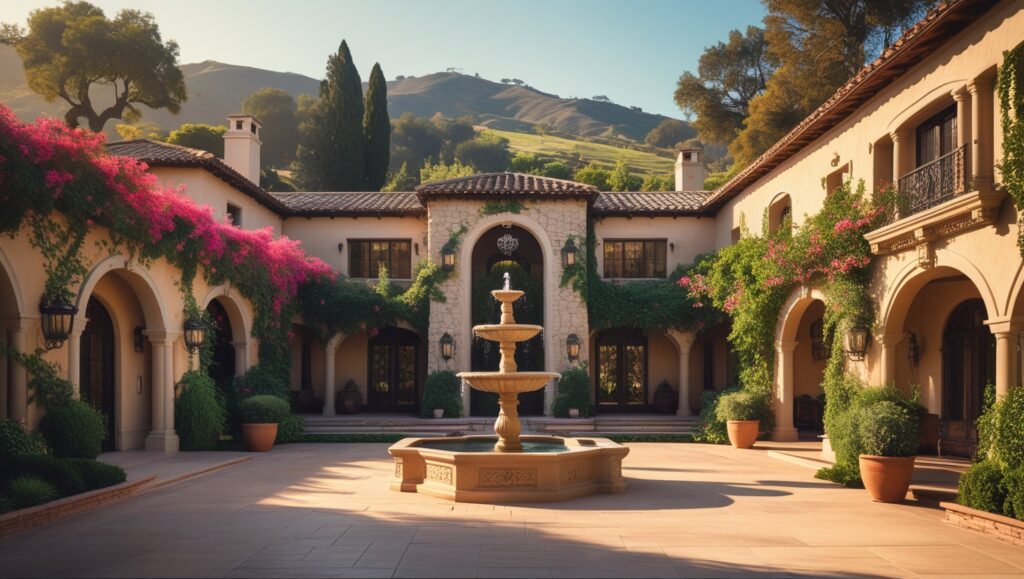
Origins and History
2. Key Architectural Features
Spanish Hacienda homes are instantly recognizable. Here are the defining elements:
White Stucco Walls: Reflect heat to keep interiors cool, ideal for warm climates.
Red Clay Roof Tiles: Add a Mediterranean flair and durability.
Arched Doorways and Windows: Create a graceful, elegant look.
Courtyards: Central outdoor spaces for light, ventilation, and relaxation.
Wrought Iron Details: Used in gates, balconies, and window grilles for charm and security.
Thick Walls: Provide insulation and a sturdy feel.
Exposed Beams: Add rustic character to ceilings.
These features make Hacienda homes both beautiful and functional, as highlighted by Sater Design.
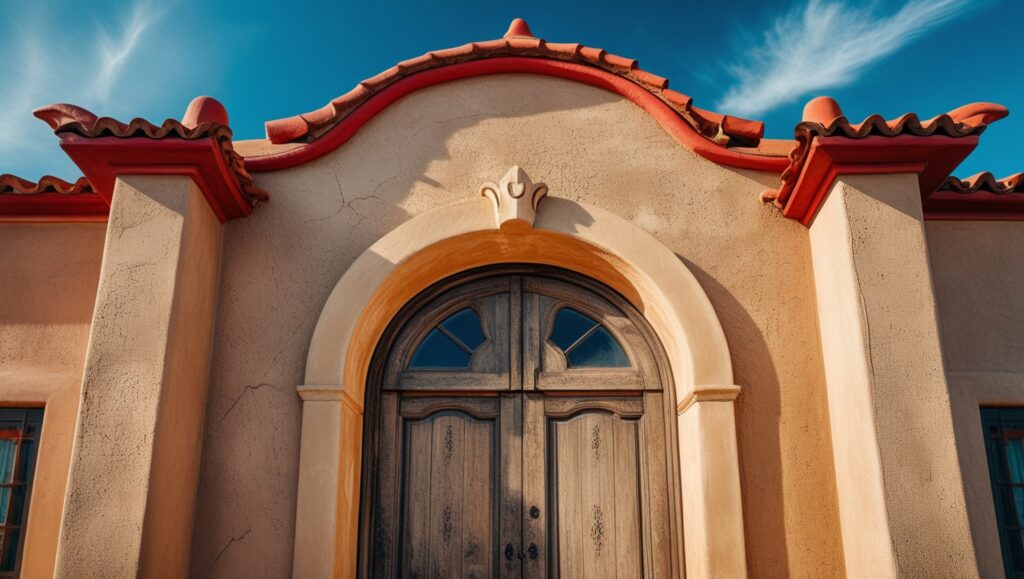
Spanish Hacienda Style Homes
3. Interior Design Elements
The interiors of Spanish Hacienda homes are warm and inviting. Key elements include:
Tile Floors: Colorful ceramic tiles, often in intricate patterns, add vibrancy.
Wooden Beams and Ceilings: Exposed beams create a rustic yet sophisticated vibe.
Fireplaces: Large, decorative fireplaces with tile surrounds serve as focal points.
Built-in Niches: Wall niches display art or decor, adding character.
Earthy Color Palette: Terracotta, ochre, and deep reds with blue and green accents.
These elements create a cozy, lived-in feel, as noted by DFW Custom Homes.
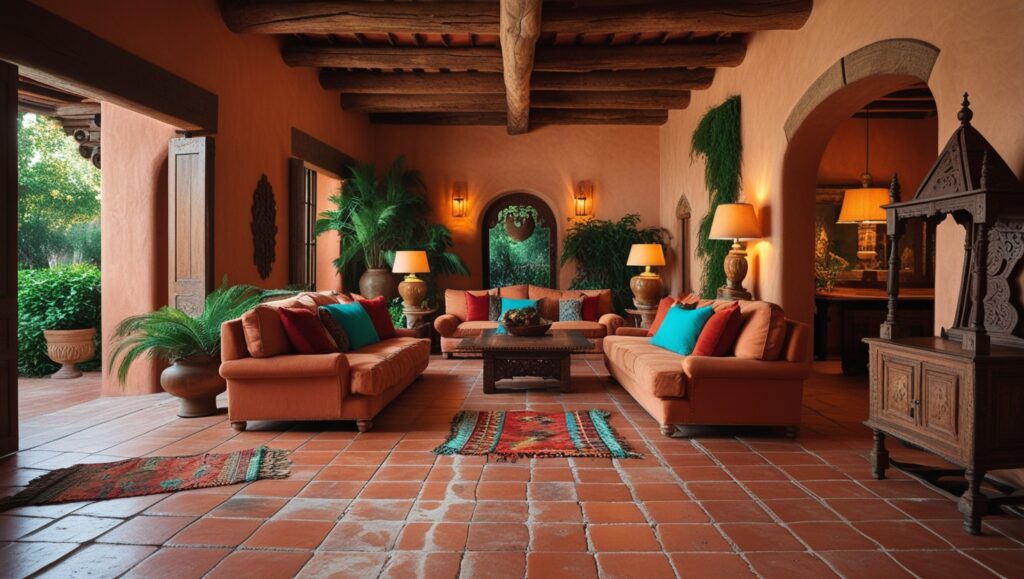
Interior Design Elements
4. Landscaping and Outdoor Spaces
Outdoor spaces are central to the Hacienda lifestyle. Key features include:
Courtyards: Often with fountains or seating areas for outdoor living.
Lush Gardens: Drought-resistant plants, olive trees, or cacti enhance the Mediterranean vibe.
Water Features: Fountains or pools add tranquility.
Patios and Terraces: Designed for entertaining, often with outdoor kitchens.
Designer Jimenez, quoted in The Spruce, emphasizes lush greenery to create a “personal paradise.”
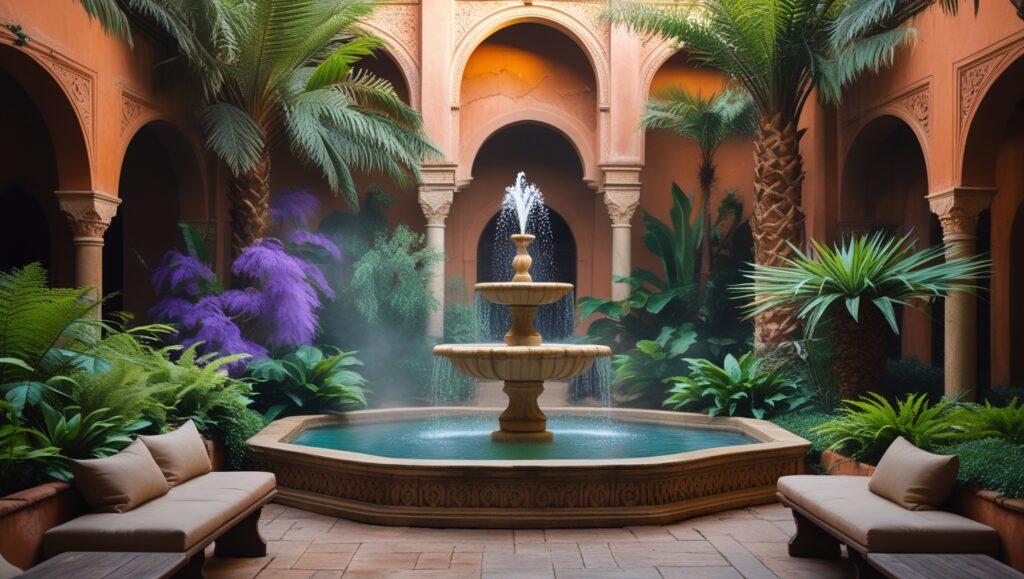
Landscaping and Outdoor Spaces
5. Modern Adaptations
While rooted in tradition, modern Hacienda homes incorporate contemporary features:
Open Floor Plans: Suit modern living with spacious, flowing interiors.
Energy Efficiency: Solar panels and insulated windows reduce environmental impact.
Smart Home Technology: Integrates seamlessly with traditional aesthetics.
Minimalist Interiors: Cleaner lines for a modern twist, as seen in some designs by Brick & Batten.
These updates make the style versatile for today’s homeowners.
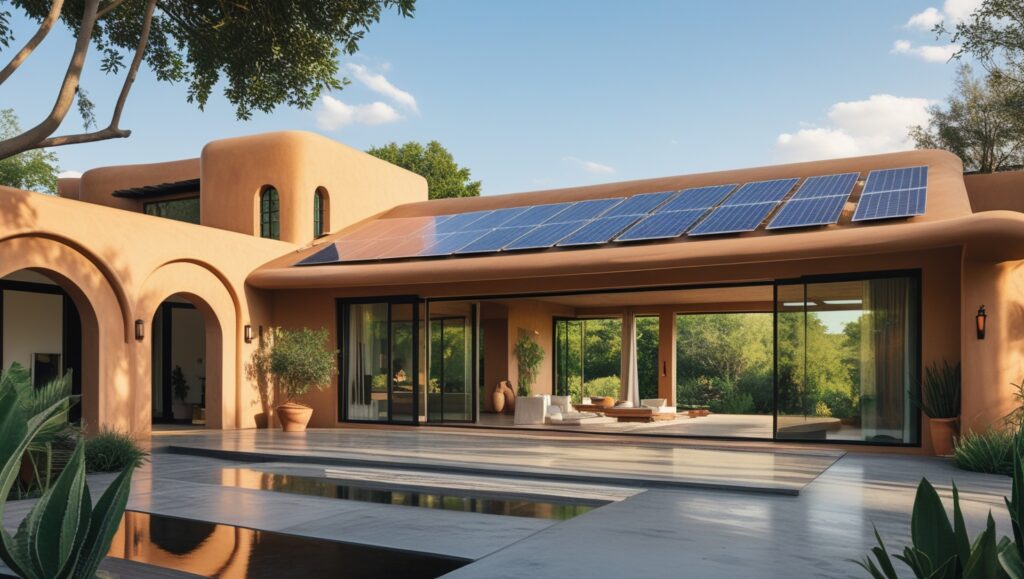
Modern Adaptations
6. Incorporating Hacienda Elements into Your Home
You don’t need a full Hacienda home to enjoy the style. Try these tips:
Exterior: Add stucco finish, arched windows, or terracotta pots.
Interior: Use tile flooring, wrought iron light fixtures, or exposed beams.
Decor: Incorporate Spanish art, textiles, or distressed wood furniture.
Designer Knizek, cited in The Spruce, suggests terracotta pots and bougainvillea for an instant Hacienda look.
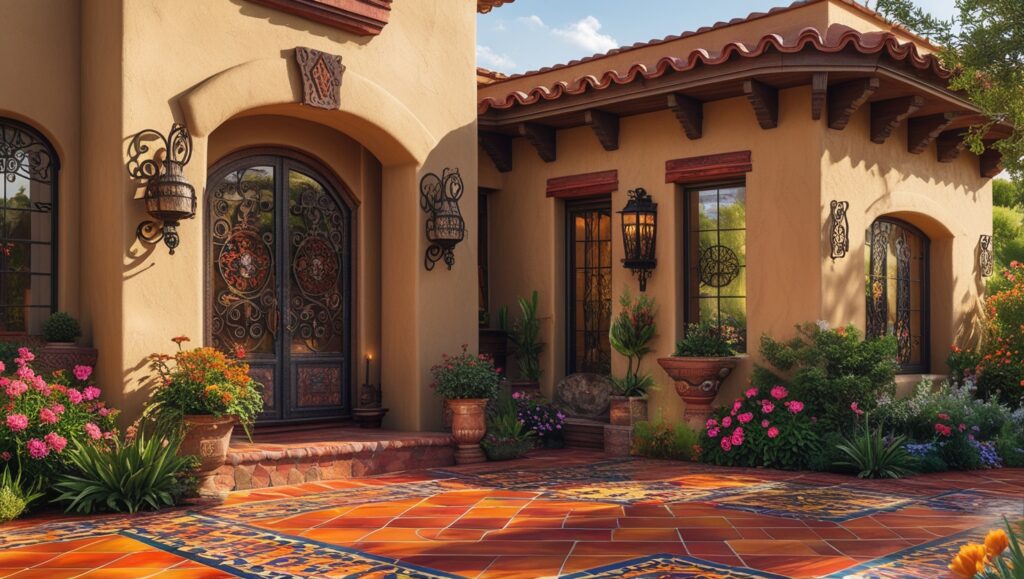
Incorporating Hacienda Elements into Your Home
7. Famous Examples
Notable Spanish Hacienda or Spanish Revival homes include:
Hearst Castle, California: Features Spanish Revival elements (Hearst Castle).
The Beverly Hills Hotel: Known for its Spanish Colonial Revival style.
Casa del Herrero, Montecito: A preserved example of Spanish Colonial Revival.
These properties showcase the style’s grandeur and charm.
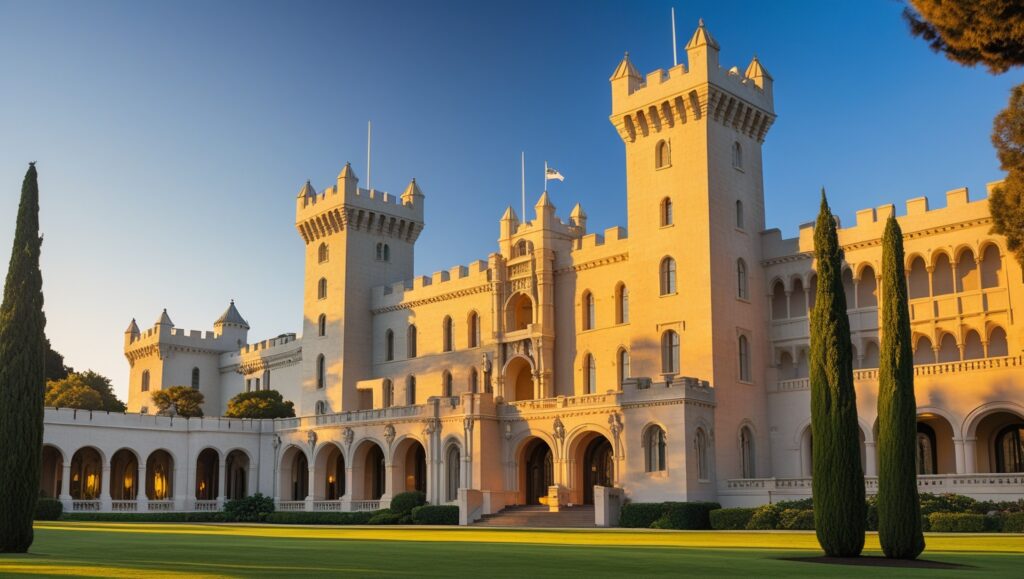
Famous Examples
8. The Appeal for USA and UK Homeowners
Why do homeowners love this style?
Timeless Elegance: Combines history and sophistication.
Functional Design: Thick walls and courtyards suit warm climates.
Connection to Nature: Emphasizes outdoor living.
Versatility: Adaptable to various budgets and sizes.
This appeal resonates in both the USA and UK, as noted by My Domaine.

The Appeal for USA and UK Homeowners
Conclusion
Spanish Hacienda style homes offer a unique blend of history, beauty, and functionality. Whether you’re drawn to their rustic charm, practical design, or Mediterranean flair, there’s something for everyone. In the USA, they’re a staple in warm climates; in the UK, they bring a touch of exotic luxury.
Want to learn more? Explore our related posts on architectural styles or share your thoughts in the comments below. If you’re inspired to incorporate Hacienda elements, sign up for our newsletter for more design tips!
FAQs
What is the difference between Spanish Colonial and Spanish Hacienda styles?
Spanish Colonial refers to architecture from the Spanish colonial period, while Hacienda emphasizes large estates with courtyards. The terms are often used interchangeably today, but Haciendas focus on self-sufficient estate layouts.
Are Spanish Hacienda homes energy-efficient?
Traditional designs with thick walls and small windows are naturally energy-efficient in warm climates. Modern versions often include solar panels and insulated windows, as noted by DFW Custom Homes.
Can I build a Spanish Hacienda home in a cold climate?
Yes, with adaptations like better insulation and larger windows to capture light, as suggested by architectural experts.
What are common mistakes to avoid when designing a Hacienda home?
Avoid over-ornamentation, which can look tacky, and ensure functional layouts. Regular maintenance of stucco and tiles is key to prevent damage.
